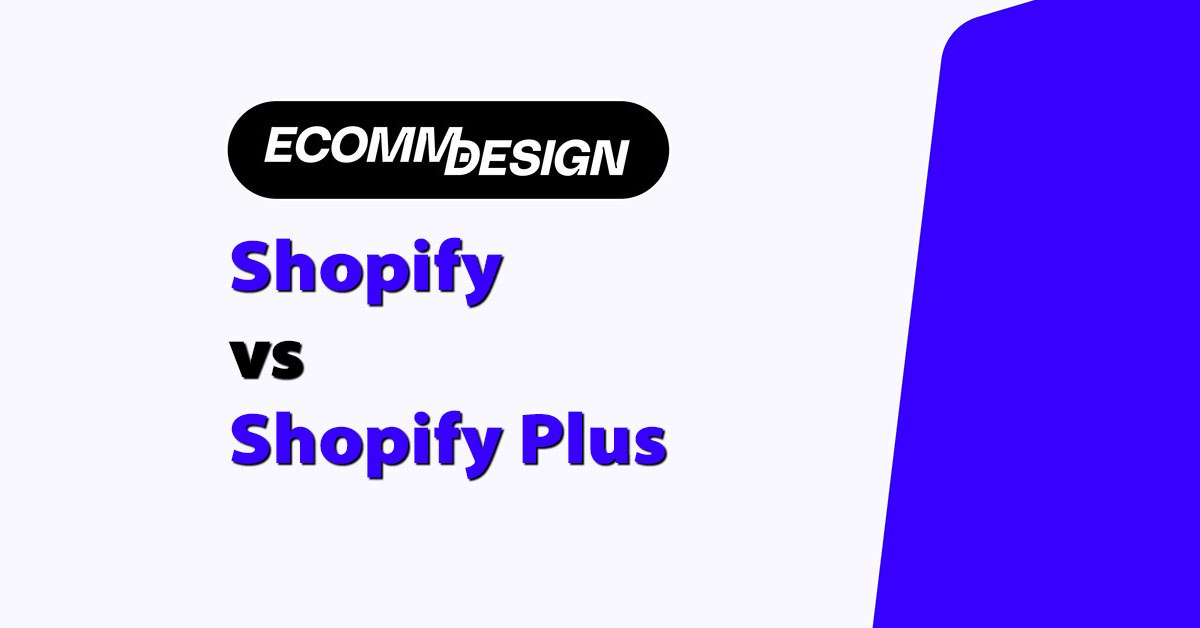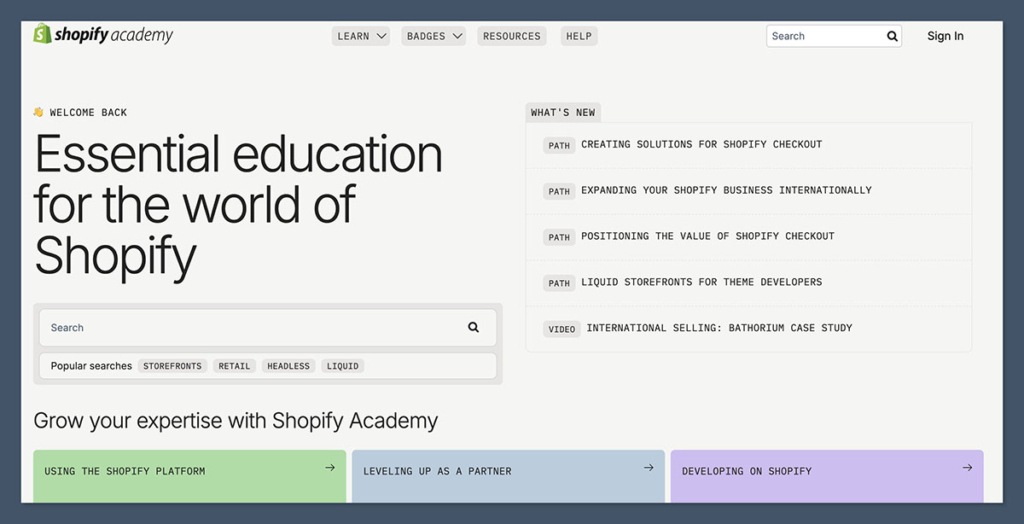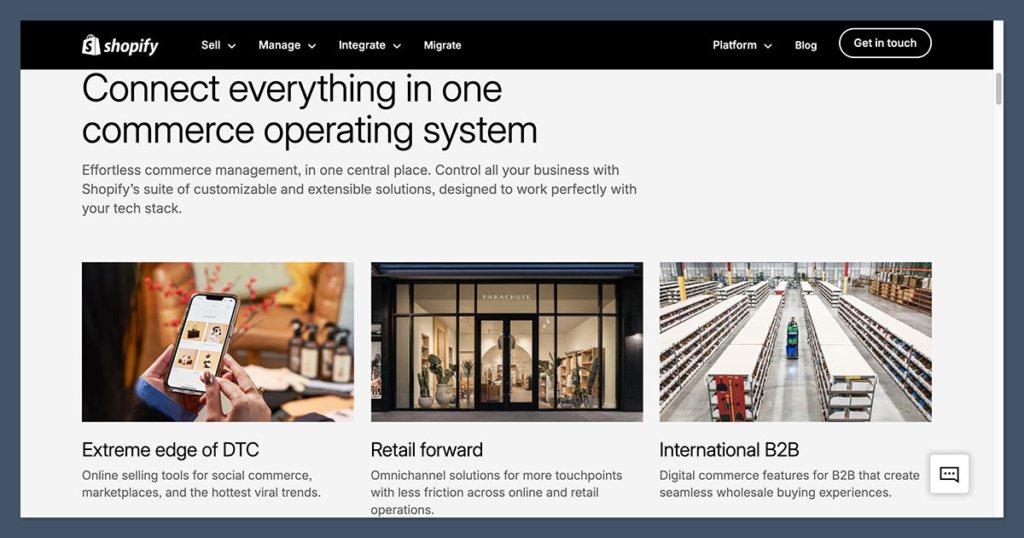
The main difference between Shopify and Shopify Plus? Price and scalability.
Shopify’s standard plans range from $5 to $399 per month, catering to small and mid-sized businesses. Shopify Plus starts at $2,300 per month, designed for enterprises with higher sales volumes and complex needs.
With Shopify Plus, you get unlimited staff accounts, advanced B2B features, custom checkout options, priority support, and deeper API integrations—things you won’t find in standard Shopify plans.
If you’re running a small store, standard Shopify is more than enough. But if you’re scaling past $1 million in revenue, Shopify Plus offers the flexibility and power to grow without limits.
I’ve put together this simple guide, to help you decide which version of Shopify you really need.
Quick Summary
- The standard Shopify experience comes with a range of plans to choose from, ranging from $39 to $399 per month, depending on your business needs.
- While Shopify’s core plans are ideal for small, to mid-sized businesses, Shopify Plus caters to huge enterprises, with more advanced requirements.
- The main difference between Shopify Plus and Shopify is the price. Shopify’s standard plans range from $5 (Starter) to $399 (Advanced), while Shopify Plus starts at $2,300 per month.
- Shopify Plus also offers access to unlimited staff accounts, wholesale and B2B features, more inventory locations, and customizable checkout options.
- Shopify Plus even comes with advanced integration options, access to API solutions, and Shopify POS Pro, for in-person selling.
Shopify vs Shopify Plus: An Overview
Shopify Plus is essentially the enterprise-level version of Shopify, a unified commerce platform that I consider to be one of the best tools out there for selling.
Shopify gives you everything you need to build a thriving online store, from a flexible CMS, to integrated payment processing and inventory management tools. Plus, it’s incredibly easy to use.
You don’t really need any coding expertise to use the Shopify standard experience, and you can still access a range of great tools, from Shopify POS Lite, to Shopify Shipping.
Shopify Plus upgrades the standard Shopify experience for enterprises making a large number of sales (think $1 million in revenue and above). The higher cost unlocks more storefront flexibility, integrations, support, and staff accounts than the standard service.
Shopify vs Shopify Plus: The Price Difference
Ultimately, one of the biggest differences between Shopify and Shopify Plus is the price.
With the standard Shopify solution, you can start selling online from as little as $5 per month, using the Starter plan.
However, I do recommend starting with the Basic plan at $39 per month, so you can build a complete online store, rather than just selling through messaging apps and social media.
Shopify’s main plans include:
- Shopify Basic: $29-$39 per month
- Shopify: $79-$105 per month
- Shopify Advanced: $299-$399 per month
All of those plans are subject to potential extra fees, such as transaction fees, if you’re not using Shopify Payments, domain hosting prices, and app costs.
Shopify Plus, on the other hand, is an enterprise-focused plan with customized pricing.
Prices start from around $2,300 per month, however you’ll need to contact Shopify’s team for a direct quote, based on your monthly sales volume, and other factors.
Shopify Plus merchants still have to pay transaction fees for third-party payment processing, but the fees are much lower.
Shopify vs Shopify Plus: The Key Differences
So what makes Shopify Plus so different from Shopify (aside from the price)?
The answer is: more than you’d think.
After experimenting with both Shopify and Shopify Plus, here are the main differences that stand out to me.
Customer Support and Educational Resources
Like most ecommerce platform providers, Shopify reserves it’s highest level of customer support for the companies paying the highest monthly fees.
When you sign up for Shopify Plus, you get priority support from the technical team, a solutions engineer, and a launch manager to help you get started.
You’ll also get your own merchant success manager, to guide you through the store setup process, address technical issues, and provide ongoing support.
On top of that, you get a huge number of additional “self-help” resources.
While I think Shopify already excels in this area with its videos, FAQs, and guides, Plus merchants also get full access to Shopify Academy.

This is basically an all-in-one educational resource hub packed with courses and webinars that can help you optimize your store’s design, build better marketing campaigns, and streamline operations.
Comprehensive Customization and Headless Commerce
Ultimately, if you’re looking for limitless flexibility, Shopify Plus will always give you more freedom than the standard Shopify plans.
Although you can customize aspects of your Shopify store, such as themes and sections on any plan, Shopify Plus takes this to the next level.
You can personalize the world-leading Shopify checkout, adding your own unique UI and content, so you can fully brand the checkout experience, and potentially reduce cart abandonment rates.
Modifying the checkout isn’t really something you can do much on standard plans.
Not to mention, Shopify Plus also allows you to create fully customized shopping experiences with headless commerce.
This means you can separate frontend customer touchpoints from the backend. You can even access dedicated support from Shopify’s team to build your headless experience.
Staff Account and Store Limitations

On typical Shopify plans, you can create between 1 and 15 staff accounts for your team members, in addition to your primary “owner” profile.
On Shopify Plus, the number of accounts you can create is unlimited, meaning your business can grow as much as you like.
You can also create as many online stores as you like, although the base price for Shopify Plus only includes 9 stores as standard, additional stores will cost another $250 per month.
Plus, you’ll have opportunities for more “markets” for international selling.
Shopify’s standard plans limit you to 3 markets per store, while Shopify Plus extends this limit to 50. Using Shopify Markets, you can create unique, localized experiences for every segment you target.
More API Options and Integrations

One of my favorite things about Shopify is how extensible it is.
I’ve yet to find another platform that offers anywhere near the number of add-ons and integrations available from the Shopify app marketplace.
Even with a standard plan, you can access thousands of different integrations for everything from marketing, to order management, and store design.
With Shopify Plus, you get access to all of those integrations, plus some specially-designed extras.
For instance, there are specialist “Shopify Plus” apps specifically created by a range of accounting, marketing, and experience design leaders.
Shopify Plus merchants also get more control when it comes to customizing API integrations.
You can seamlessly connect your store with your existing ERP and CRM systems, create “multipass” experiences for customer logins and more.
Different Transaction and Processing Fees
Like all payment processors, Shopify Payments charges credit card processing rates on every transaction.
The amount you’ll pay for these fees varies depending on which plan you choose. For instance:
- Shopify Starter: 5%
- Shopify Basic: 2.9% plus 30 cents
- Shopify: 2.6% plus 30 cents
- Shopify Advanced: 2.4% plus 30 cents
There are also extra transaction fees you’ll need to pay if you’re using a third-party payment processor like Square. These fees range from 0.5% on the Advanced plan, to 2% on the Basic Shopify plan. Shopify Plus merchants get discounts on all of these fees.
Your standard payment processing rates will drop to around 2.15% plus 30 cents, while transaction fees for third-party gateways fall to only 0.15%.
Unique Promotional Discounts
On all Shopify plans, companies can set up unique promotions to help increase conversion rates and sales.
I actually think the standard plans are excellent for giving you a range of ways to increase sales. You can create fixed-value discounts, percentage-rate discounts, and offer free or reduced shipping. There’s also the option to create buy-one-get-one-free sales.
There’s even a handy reporting section in the Shopify admin dashboard where you can track the impact your sales and promotions are having on your company’s growth.
With Shopify Plus, you can create all of those promotions, and a few extras. For instance, you can leverage the “Launchpad” service, unique to Shopify Plus, which automates the aspects of most promotional campaigns, product releases and flash sales.
You can schedule new products and omnichannel campaigns to run automatically, and even generate predetermined discounts for certain products and collections.
Plus, there’s the option to return pricing to normal rapidly at the end of a promotion, and stack multiple discounts for customers.
B2B and Wholesale Selling
As I mentioned above, regular Shopify plans are intended for smaller companies, primarily those selling to customers.
Shopify Plus, on the other hand, enables new forms of wholesale and B2B selling with various unique features and apps.
For instance, you can access the Shopify Plus admin interface to manage multiple stores with a single login in one place. You can set up separate (but connected) Shopify storefronts for wholesale customers, with quantity rules, and unique payment terms.
You’ll also be able to access top-level analytics for all the stores in your organization, add additional users for each store, and manage access permissions at scale.
Plus, you’ll have access to tools like the Shopify Transporter app for ingesting various forms of data, and the Shopify Script editor.
Unmatched Bandwidth and Scalability
Shopify’s standard plans are pretty scalable, and I’ve never had much of a problem with the platform’s performance.
However, with Shopify Plus, you do get extra peace of mind from a 99.99% uptime guarantee, and a load-tested checkout with 40 times the capacity of the standard Shopify alternative.
Plus, you’ll be able to access the latest features offered by Shopify first.
This means you can take advantage of new AI capabilities, innovative automation tools and more before anyone else on Shopify’s customer list.
Since Shopify releases new features all the time, I definitely recommend Shopify Plus to companies who want to stay ahead of the curve.
Extensive Omnichannel
Finally, one of the main reasons I love Shopify is that it makes omnichannel selling a breeze.
On any plan, you can sell across a range of different channels, from social media platforms, to marketplaces, and even in-person with Shopify POS Lite.
However, Shopify Plus gives you access to up to 100 social media channels for sales, 80 marketplaces, and Shopify POS Pro (the fully-featured point of sale solution).
This advanced POS solution supports rich customer profiles, granular inventory management and advanced analytics.
Plus, with Shopify Plus, you also get access to Shopify Flow, Shopify’s extensive automation solution, so you can bridge the gaps between your omnichannel sales strategies with ease.
Shopify vs Shopify Plus: Which Do You Need?
Ultimately, Shopify’s standard solutions are excellent for any company who wants access to a scalable omnichannel environment for online and offline sales.
Shopify Plus simply takes the benefits of Shopify to the next level, offering greater opportunities for customization and growth.
If you’re looking for unlimited freedom within your Shopify store, access to B2B sales features, or even extensive point of sale technology, it’s definitely worth considering a Shopify Plus upgrade.



